I put in place SDR Console for six meters just in time for a mega opening the evening of June 3 2020. That clearly helped demonstrate the superb utility of an SDR to monitor the band and find the stations across multiple modes.
NESDR SMArt RTL-SDR
 You may have read my earlier post SDR Arrives at K5ND. In mid-May I added this $30 SDR that covers 25 to 1750 MHz. Paul, N2EME, provided an introduction to this device during an online presentation to the Front Range 6 meter Group.
You may have read my earlier post SDR Arrives at K5ND. In mid-May I added this $30 SDR that covers 25 to 1750 MHz. Paul, N2EME, provided an introduction to this device during an online presentation to the Front Range 6 meter Group.
It’s interesting that I’ve previously considered similar SDR devices for satellite work. But I just couldn’t pull the trigger. However, with Paul highlighting its application to 6 meters, I sprang for it right away. Not that I’m a 6 meter addict, no not at all.
SDR Console Software
This is Paul’s recommendation to use with this device, and it’s free. So that’s what I tried out in mid-May with weather satellites, etc.
Paul believes in this software so much that he took time with me later that month to first run through his own set up in his ham shack. Then he used AnyDesk to take over my computer and set several things up that optimized my view.
Paul offers that he doesn’t know all the features of the software even though he’s been using it for years. The documentation is very limited, but it is free and works like a charm. And the capabilities are staggering — you just need to find them.
PaulFLEX PTT Box
The rest of the system uses a relay box to connect your antenna to both your transmitter and your SDR receiver. It adds a dummy load for terminating the receiver when you’re transmitting. In this way you can use the SDR as receiver and your normal rig as the transmitter.
I’ve provided a couple of photos nearby. Paul makes this box and sells them to go with the set up. It works very well.
*** Contact Paul directly via his QRZ page email address for purchase price and delivery details.
SDR Use on Six Meters
It can be complex or simple. I’ve chosen perhaps the simple route in my start up efforts. With SDR Console you can create up to 24 receiver screens. I’ve chosen three for the moment.
The first monitors 50.125 for SSB signals. The second monitors 50.313 for FT8. The third monitors 50.323 for intercontinental FT8. Other thoughts are to monitor CW frequencies, beacons, FT4, and MSK144.
Right now I’m only using the SDR to monitor what’s going on across the band. I have used a virtual audio cable to connect the 50.313 FT8 to WSJT-X. It works well in that application. Likewise, you could use separate instances of WSJT-X to decode 50.260 for meteor scatter, FT4, and more, all at the same time.
On the screen shot below you can see how it worked during the opening last night. Receiver #1 was on SSB monitoring a signal near 50.140, #2 on FT8 313, and #3 on FT8 323. Those are displayed across the top of the screen. The bottom of the screen covers the broader SSB band and points out additional signals to the one you’re monitoring, like the one shown at about 50.128. [See more information below about how to add receivers to the SDR Console display.]
It really worked nice pointing out activity levels in each area. For example, at times there was a great deal of activity at 50.323. But each time I checked, I found only USA stations calling Japan. An improvement would be adding Receiver #4 to monitor CW.
Here’s another shot with activity on all three receivers and the bottom strip monitoring the 50.300 range. I prefer monitoring the SSB segment — something I figured out during last night’s opening.
Next Steps
The list of possible next steps boggles my mind. I’ve mentioned adding a few more receivers above as well as adding other instances of WSJT-X. Then I could learn a great deal more about the signal processing capabilities of SDR-Console. Lots of new things to learn. Try it out on your ham radio adventures.
Update January 2021
Paul, N2EME, has noted that several readers have been asking how to add receivers to the display. Here’s a few hints to get you started.
Adding a Receiver
Click on the image above for a larger version if needed. The arrow to the left points to a “plus” button. Click on it to add a receiver. The arrow on the right points to the display of, in this case, all four receivers showing their frequency, modulation mode, and whether the audio output is muted (red X) or on.
Changing the Number of Receivers
The arrow above shows the button (…) to press to open the window shown. Here you can select the number of receivers, the height of the receiver window, and the frequency zoom that will be shown. Click on a few buttons and see what happens.
Individual Receiver Setup
Once you’ve selected a receiver by mousing over that receiver’s display and clicking on “select” you can open the DSP window by clicking on the “DSP button” at the top left hand corner of the display. You must be in the Receive Tab. See below.
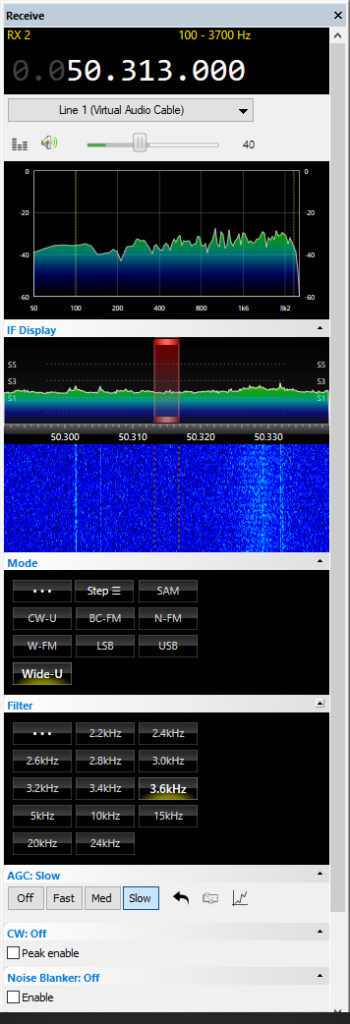 To the right is the DSP display for one of the receivers. This is where you select the audio output for the receiver. Here I have a Virtual Audio Cable that is routed to WSJT-X. You can also select the mode, filter, AGC, etc. Try it out. You can also select the exact frequency by clicking up/down on each digit in the frequency display.
To the right is the DSP display for one of the receivers. This is where you select the audio output for the receiver. Here I have a Virtual Audio Cable that is routed to WSJT-X. You can also select the mode, filter, AGC, etc. Try it out. You can also select the exact frequency by clicking up/down on each digit in the frequency display.
What I’ve Been Doing
I’ve been using SDR Console with it’s built in satellite tracking to record a few weather satellite images. You can find my write up at WX Satellite Update. I used NESDR’s NOAA SAWbird preamp along with an M2 Eggbeater antenna for 137 MHz.
For six meters, I use Paul’s PTT box along with a TE Systems 6 meter amplifier that also includes a preamp. I’ve further added the Nooelec LaNA wideband preamp to the SDR receiver. Perhaps too much amplification, but it’s working fine.
I do see that Nooelec has just added a SAWbird 2 meter LaNA to their line. That might be handy for Paul’s new 2 meter PTT box when it’s available.
Stay tuned for more ham radio fun.
Good luck.

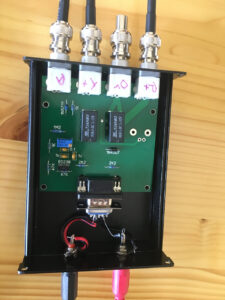

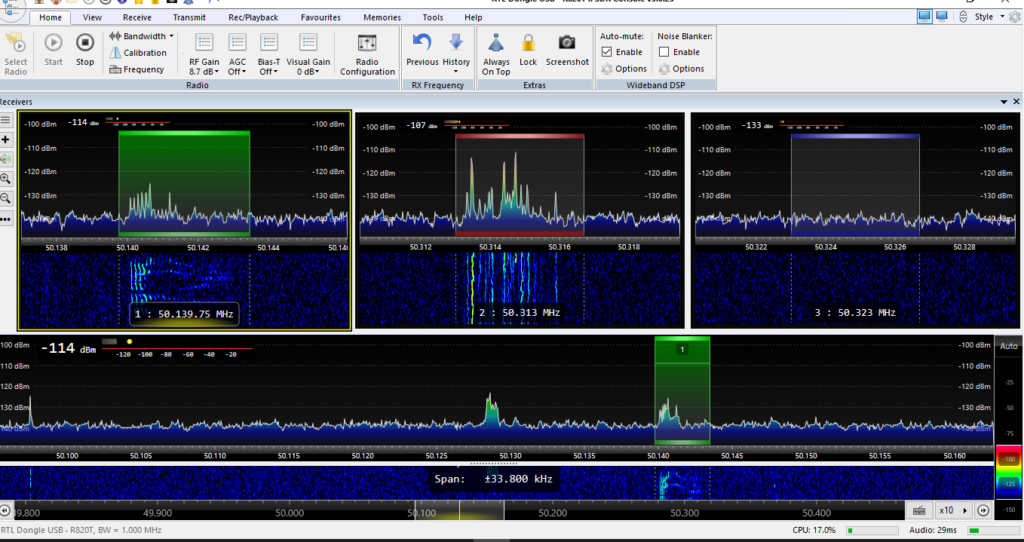
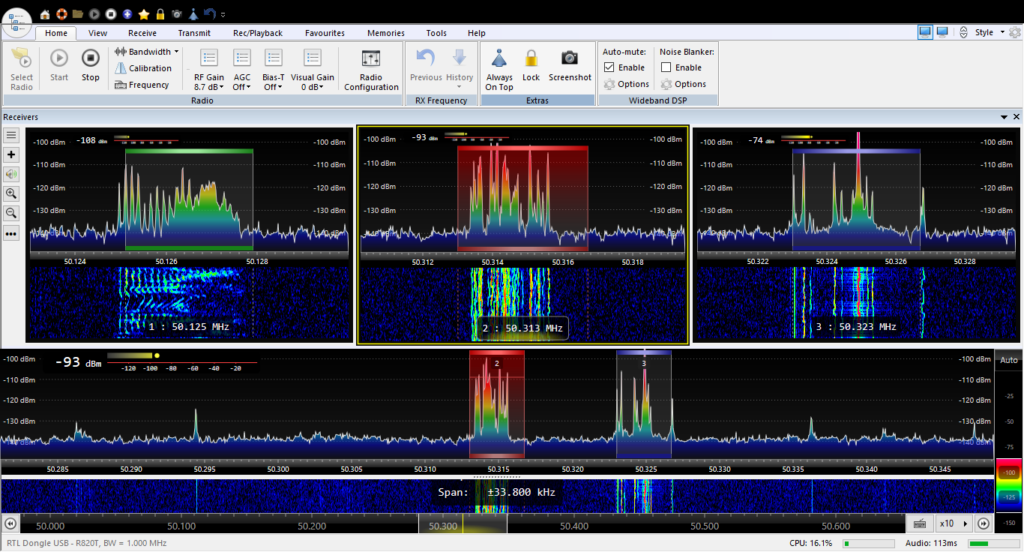
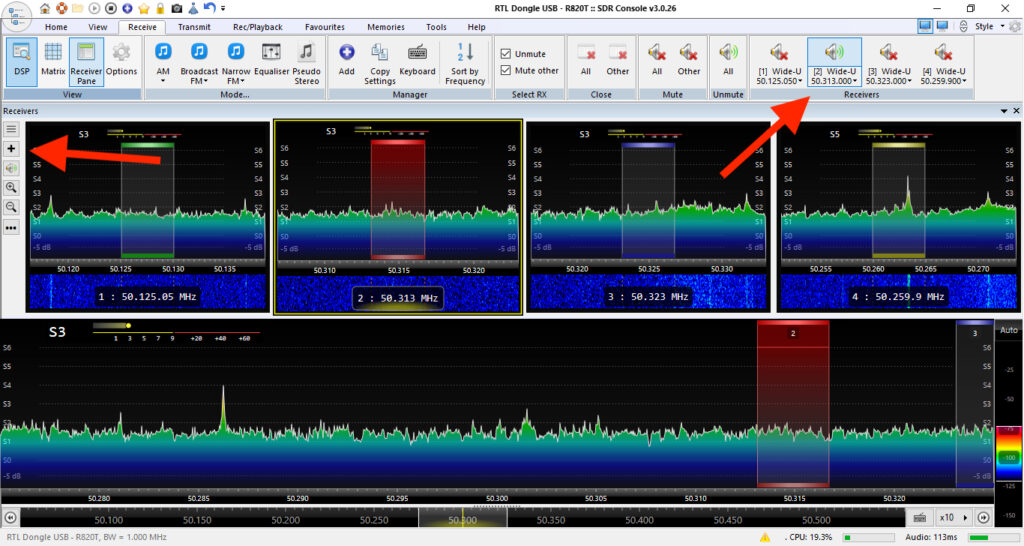
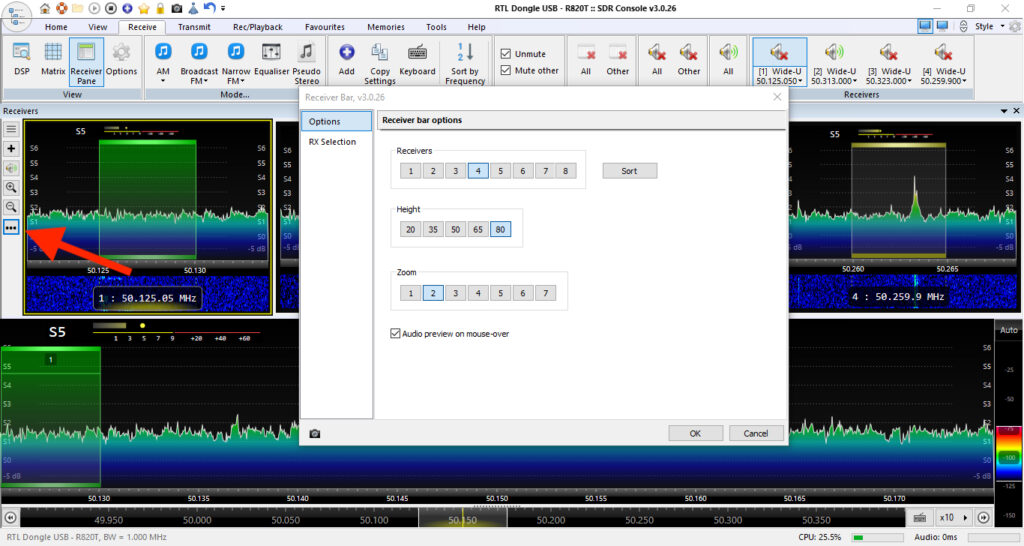
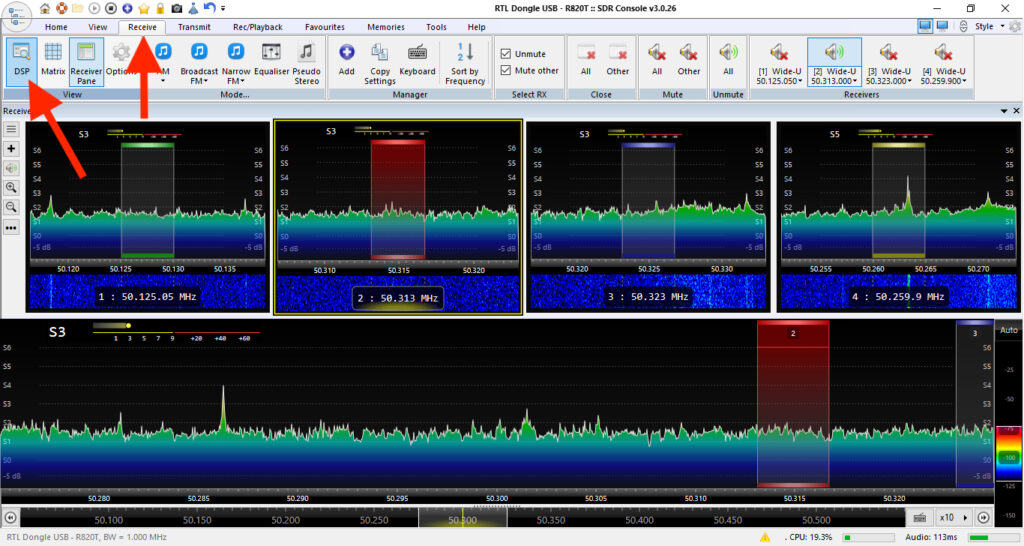
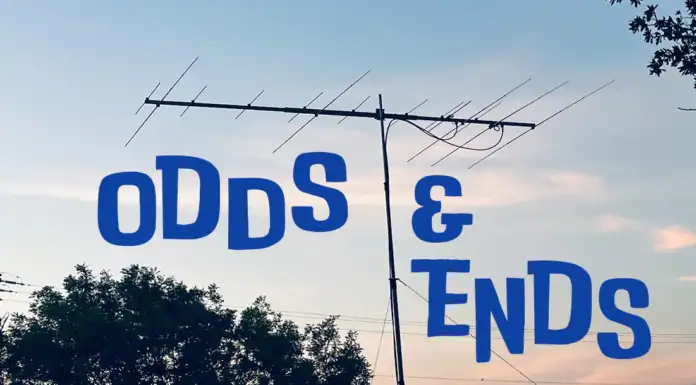





Great write up Jim. Glad you are enjoying your new toy – 73 Paul NO0T
[…] used SDR to monitor six meters but saw no SSB QSOs on the screen. Conditions were good at times but fairly quiet overall. On […]
[…] manually. Rather than try some sort of manual switching on the input to the Airspy SDR running SDR-Console, I’ve used a Mini-Circuits Combiner/Splitter to route both 2-meter and 6-meter signals to the […]